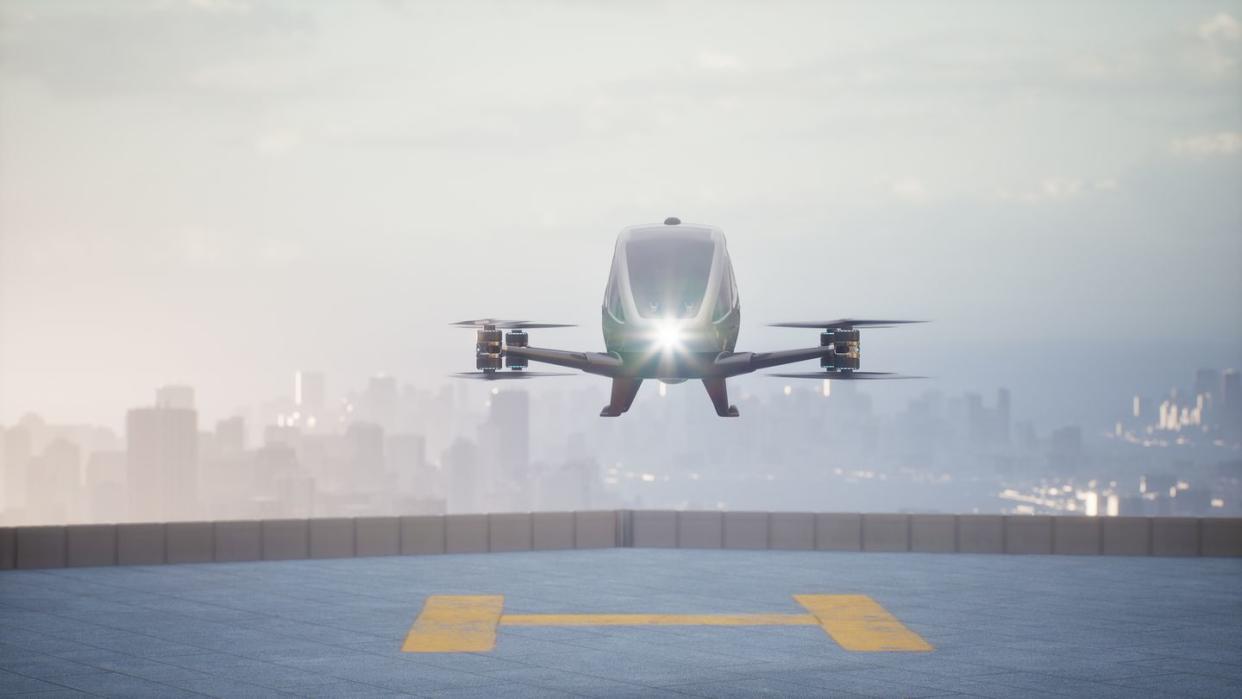Scientists Are Testing Air Taxis That Make You Feel Like You're Gliding

NASA’s research team is studying motion limits to better understand how to keep air taxi rides comfortable.
The agency plans to share the results of the research with industry partners working to bring air taxi capabilities to American cities.
Using flight simulators and human test subjects, the study could take another four years.
Since NASA expects to have a burgeoning electric air taxi and drone industry roaming American skies by 2030, we might as well be comfortable as we scoot about above the congested roads. That’s why NASA’s Armstrong Flight Research Center in California is testing air-based rides in a new simulator. They want new aircraft designed with passenger comfort in mind.
NASA plans to put more test pilots in the seat later this year, once the virtual simulator studies get dialed in. “The experiments in the ride quality lab will inform the advanced air mobility community about the acceptability of the motions these aircraft could make,” Wayne Ringleberg, a NASA test pilot, said in a news release, “so the general public is more likely to adopt the new technology.”
Once the Jetson-style new technology finally surfaces and commuters are given the chance to hover above soul-sucking traffic, we’re pretty sure quite a few folks will want to adopt it. But making sure they can handle the movements—and not get sick along the way—is a key piece of the next wave.
“This project is leveraging our research and test pilot aircrew with vertical lift experience to validate the safety and accuracy of the lab in preparation for test subject evaluations,” Ringleberg said.
In the most recent virtual reality-based test, Ringelberg hopped onto a simulator platform seat, donned a virtual reality headset and headphones, and then simulated an air taxi ride from a conceptual vertiport on top of a parking garage in downtown San Francisco. NASA engineers constructed the virtual world that then took him through San Francisco before landing on the top of another skyscraper vertiport.
The goal of the project was for Ringelberg to evaluate the realism and consistency of the simulation’s visual, motion, and audio cues. Next comes four years of human subject research studies, all aiming to help the industry understand what makes air taxi rides comfortable and enjoyable. The Armstrong Flight Research Center will serve as the base of operations for the project.
“In the 1970s, NASA was instrumental in developing passenger ride quality metrics for jet airliner noise, seat vibration, and motion sickness through human subject testing using a unique passenger ride quality simulator located at NASA’s Langley Research Center,” Curt Hanson, senior flight controls researcher for the project, said in a news release. “Now, NASA’s Armstrong Flight Research Center is taking this technology into the 21st century.”
While making the leap from a comfortable conceptual air taxi ride to an actual air taxi ride may be a bit distant, that doesn’t mean NASA isn’t preparing for it. As part of the agency’s Advanced Air Mobility Mission, the agency aims to deliver data to the air taxi industry and help the Federal Aviation Administration in safely integrating these vehicles into the national airspace. NASA claims that this will “set the stage for a flourishing industry by 2030.”
Hey, once we have the air taxi capabilities, we’ll all be glad for that extra level of comfort.
You Might Also Like


